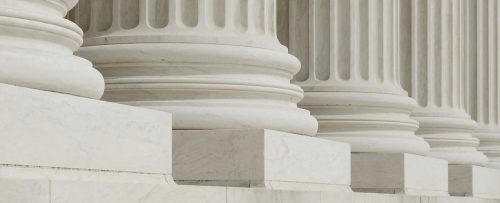
News & Events | CWP Admin
Summary: DOL’s Advisory Board Subcommittee Teleconference 1/6/17
January 9, 2017
January 9, 2017
CWP Admin
News & Events
DOL provided a draft of the Occupational History Questionnaire (OHQ) on which they have been working. This draft was not available to the public, however a copy of the OHQ the Building Trades National Medical Screening Program uses was posted to the meetings website.
While the SC members noted some changes they were unsure if DOL’s draft was an improvement over the current questionnaire. They SC members observed that there were more opportunities for the interviewer to include verbatim testimony from the worker. However, some members questioned whether this would stimulate the workers’ memory of what they may have been exposed to. One member suggested that the DOL questionnaire include a list- of tasks similar to Building Trades form. It was acknowledged that this could be cumbersome since there were and are quite a number of job categories at the sites. It was suggested that Board Member, Mark Griffon, be asked about the types of tasks the production side would be involved with.
The SC also questioned how the OHQ was considered during the adjudication process. One member observed that it didn’t appear to hold much weight as evidence in the claims he reviewed. The DOL representative stated that it’s difficult to assess the accuracy of the OHQs but that DOL will welcome any suggestions and asked that it would be worthwhile for the SC to provide advice on how DOL can validate what the worker says. The SC acknowledged that it is not helpful if a worker says they were exposed to everything on the list. The three members who represent the claimant and advocate community reminded everyone that the workers didn’t always know the chemicals they were working with.
It was suggested that the industrial hygienists (IH) should be brought in early on the adjudication process, especially for those sites who do not have a SEM; that it shouldn’t be left up to the claims examiners to determine which exposures should be reviewed and that the IH and contract medical consultants (CMC) should automatically have access to the OHQ.
The DOL representative voiced concern that this will prolong the process. A board member mentioned presumptions and DOL said that presumptions are a “good idea” and that this would provide “the quickest path to a positive outcome.” The SC voiced concerns that a presumption policy may become the basis for an automatic denial if the worker does not meet the criteria.
There was a discussion of the presumptive policy for COPD. The DOL policy allows that asbestos can cause COPD. However, the SC noted that other exposures can result in this disease – specifically exposure to vapors, gasses, dusts and fumes. The SC will develop a recommendation to DOL on COPD using the Building Trades’ June 17, 2016 letter to the director of the program as a starting point. This letter recommends an expansion of DOL’s policy to include considering other exposures such as dusts, gasses, etc. and expanding the time, commonness, duration and time of first exposure.
One SC member voiced a concern about the inconsistency of the CMCs reports in the COPD claims he reviewed. He suggested that a process be developed so that CMC reports are consistent. This suggestion will be referred to the SC on IH and CMC reports. The presumption on hearing loss will be referred to the Work Group on Presumptions.
Currently, the SEM only lists health effects that are listed in the Group 1 of the International Agency for Research on Cancer (IARC). The DOL representative asked the SC to advise if the information in IARC’s Groups 2a and 2b hold sufficient information so that those diseases can be added to SEM. There was a discussion of other compensation programs such as the World Trade Center and the Veterans Administration. The SC will research those programs to determine how presumptive diseases were accepted.
The last discussion concerned DOL’s acceptance of the workers’ OHQ and affidavits. One board member stated that often DOL is reluctant to accept the worker’s testimony because it is self-serving. She noted that DOL requires that the worker prove specific exposure documentation yet there often aren’t such records in the worker’s employment files. She reminded the SC that the Department of Energy stated in an email that these exposure records do not always make it to the employee’s records. The SC Chair said she will review the available claim records.
The SC will schedule a teleconference before the face-to-face meeting in April at Hanford.
